|
NPS.gov / Park Home / Learn About the Park / Nature / Animals / Birds / Birds of Prey 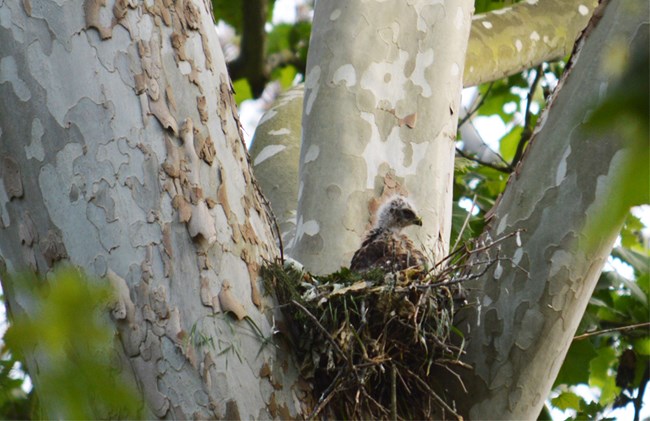
NPS Photos/A. Cook Red Shouldered Hawk (Buteo lineatus)• Red-Shouldered Hawks return to the same nesting territory year after year and both the males and females help each other build or rebuild a nest• They love to eat small mammals, lizards, snakes, and amphibians. They hunt by sitting high above and silently watching their prey. • When trying to attract a mate the male Red-Shouldered Hawk does a type of sky dance where he soars while calling, then makes a few deep dives towards the female and then going back up in wide spirals before finally landing on the females back 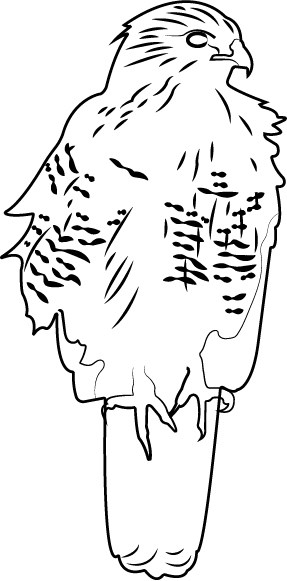
NPS/Intern Tristan Thomas Identification Information:• Size: Bigger than a crow but smaller than a goose (medium sized)• Color: Dark wings with white checkered pattern. Orangeish red belly. Their tail is black with narrow white bands 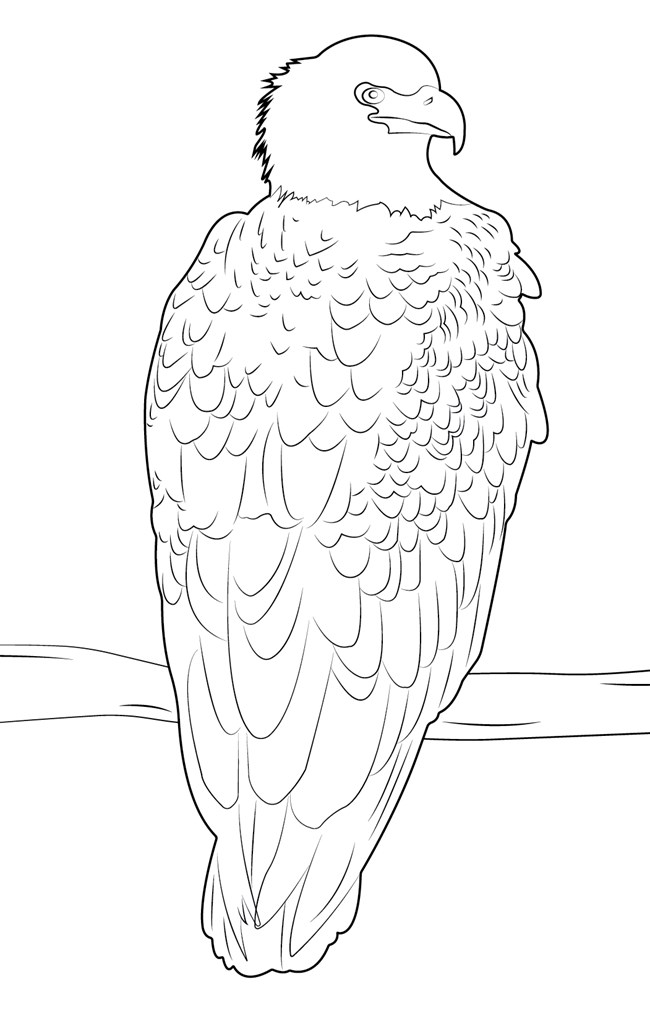
NPS/Intern Tristan Thomas Bald Eagle (Haliaeetus leucocephalus)• Instead of fishing for themselves, Bald Eagles often go after other animals food catches. They will harass other raptors until they drop their prey in midair where eagles then swoop it up.• Bald Eagles have very elaborate courtship displays. One example is when male and female fly high into the sky, lock talons, and then cartwheel downwards together and break apart at the last instance to avoid crashing into the ground. • Bald Eagles like to live in forested areas near large bodies of water and they try to stay away from heavily developed areas when possible. Identification Information• Size: Goose sized or larger (Large)• Color: The bald eagle has a white head with dark brown bodies and wings. Their legs and beaks are a bright yellow. Young bald eagles are all brown with some white speckles here and there. 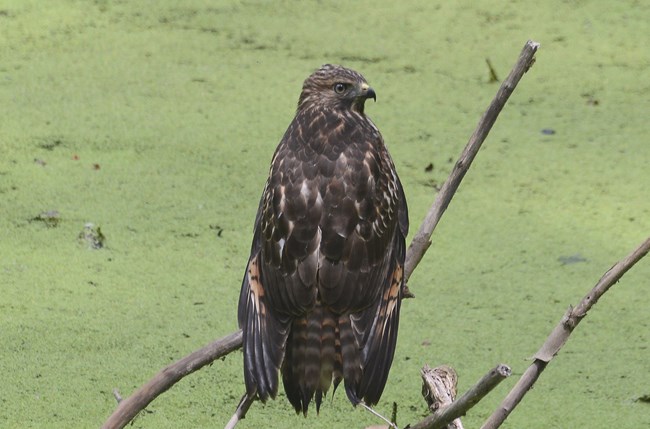
© Bill Telfair Red-tailed Hawk (Buteo jamaicensis)• The Red-tailed Hawk has a loud, raspy scream that is exactly the sound you’d imagine a fierce bird of prey making. In movies or tv shows, the bird cry you usually hear when their is a hawk or eagle present is the sound of a Red-tailed Hawk.• When Red-tailed Hawks are trying to find a mate they put on a display where they soar in wide circles very high up. The males then dive at a very steep angle and then shoot up again at another steep angle. After swooping several times he gets closer to the female from above, extends his legs, and briefly touches her. Sometimes like eagles, the pair grab onto one another by grasping each others talons and plummeting towards the ground in a spiral and pulling away right before they hit the ground. • Red-tailed Hawks favorite food is mammals like voles, mice, woodrats, rabbits, jackrabbits, and ground squirrels. In addition to this they will also eat small birds, snakes, and carrion (dead animals) • Mated pairs of Red-tailed Hawks usually stay together and mate for life until one of the pair dies. Identification Information• Size: Between a crow and a goose (Medium)• Color: Red-tailed Hawks are a dark brown on their tops and wings and a pale white with a streaked belly on their underside. Their tail feathers are also usually pale on the underside but on the top they are a light cinnamon brownish/red. 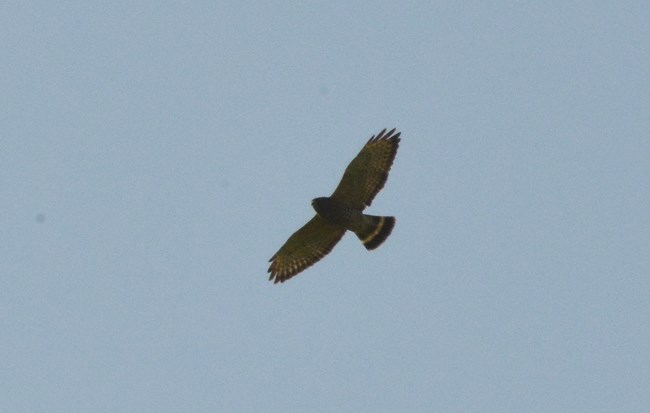
© Bill Telfair Broad-winged Hawk (Buteo platypterus)• Broad-winged Hawks like to eat small mammals, amphibians, and insects. The look for food by perching on tree limbs. When they spot prey they swoop down and snatch it from off the forest floor.• When building the nests the female does most of the construction and is assisted by the male. To build the nest they collect dead sticks from the ground and carry them in their talons into the tree where their nest is being built. They spend 2-4 weeks building their nest. • In the forest, Broad-winged Hawks take short flights from branch to branch but during the breeding season they soar and fly in circles above the tree canopy to protect their nest and territory. • During the breeding season, Broad-winged Hawks only interact with their mates but during the fall and spring migration the hawks will form enormous flocks that include other raptor species. These flocks can sometimes total tens of thousands of individual birds. Identification Information• Size: Between a crow and a goose (Medium)• Color: Adult Broad-winged Hawks have reddish-brown heads with striped brown and white bellies and thick black and white bands on their tail. The undersides of their wings are pale white and bordered in dark brown. Young Broad-winged Hawks are a light brown and their tail is narrowly banded. 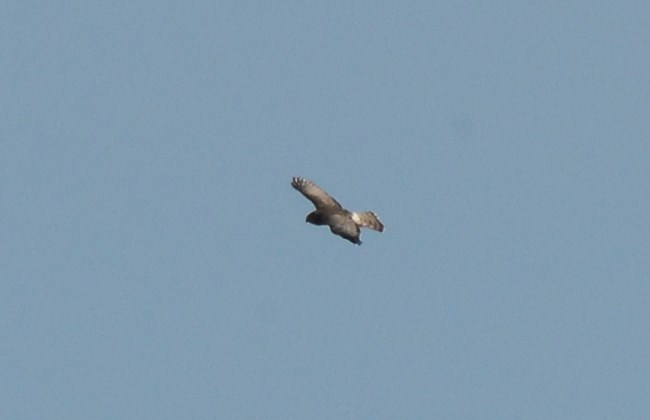
© Bill Telfair Northern Harrier (Circus hudsonius)• Northern Harriers are the most owl-like of the hawks (though they are not related to owls). They rely on their hearing and their vision to catch prey. And their faces look and function very similar to owls because their stiff facial feature helps direct sound to their ears.• Male Northern Harriers can have as many as 5 mates at once though most only have one or two. Though the male has lots of mates he provides most of the food for his mates and their offspring while females take care of the eggs and chicks. • Though Northern Harriers mostly hunt and eat small mammals and birds they are also capable of capturing bigger prey like rabbits and ducks. Sometimes to capture this larger prey they drown them. • When males court females they display and advertise their territory by performing a type of sky dance display. They do this by going up and down like a rollercoaster sometimes going as far as half a mile doing this. Identification Information• Size: Between a crow and a goose (Medium/Large)• Color: Males are gray on their tops and wings and white on their bellies with black wingtips and a black-banded tail. Females and young Northern Harriers are brown with black bands on their tail. Adult females have off-white bellies with brown streaks and young hawks are a lighter brown with less streaks. All Northern Harriers have a white patch on their behinds that is very noticeable in flight.
All of the above information is an abbreviated version of information gathered from the Cornell Lab of Ornithology. Please visit their website for more in-depth bird information.
|
Last updated: September 13, 2019
